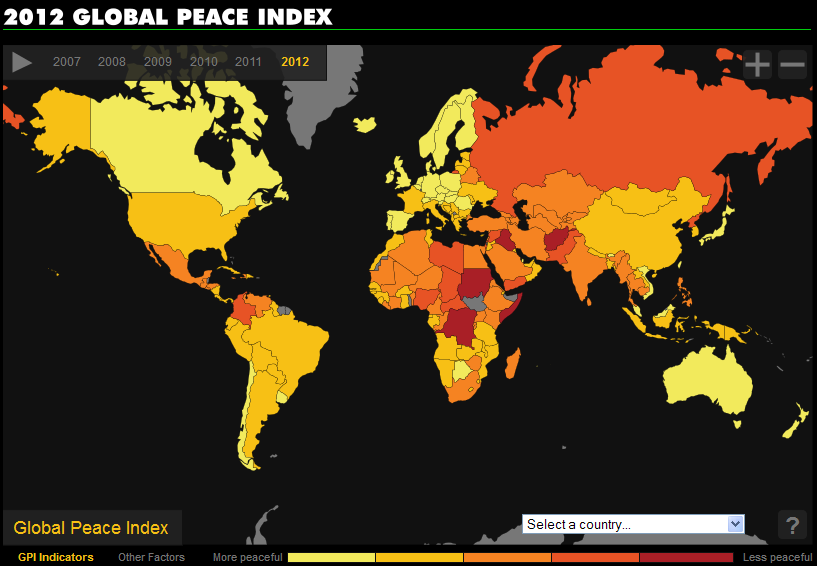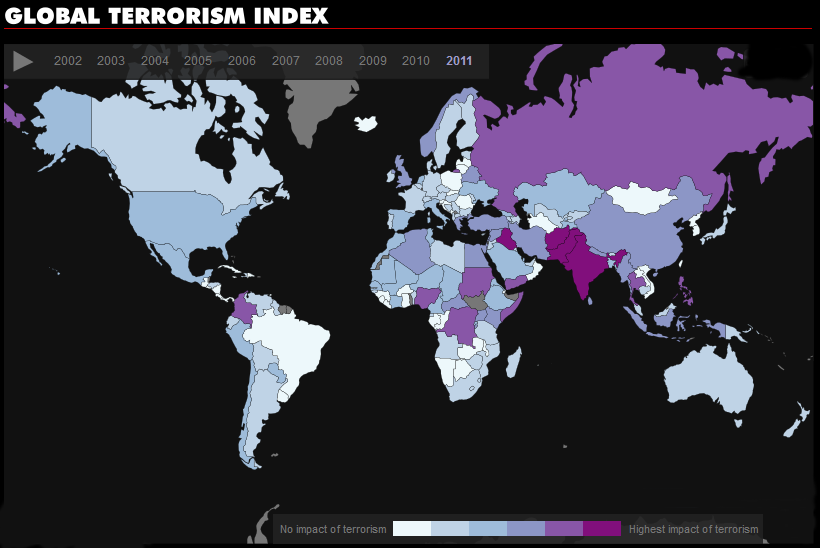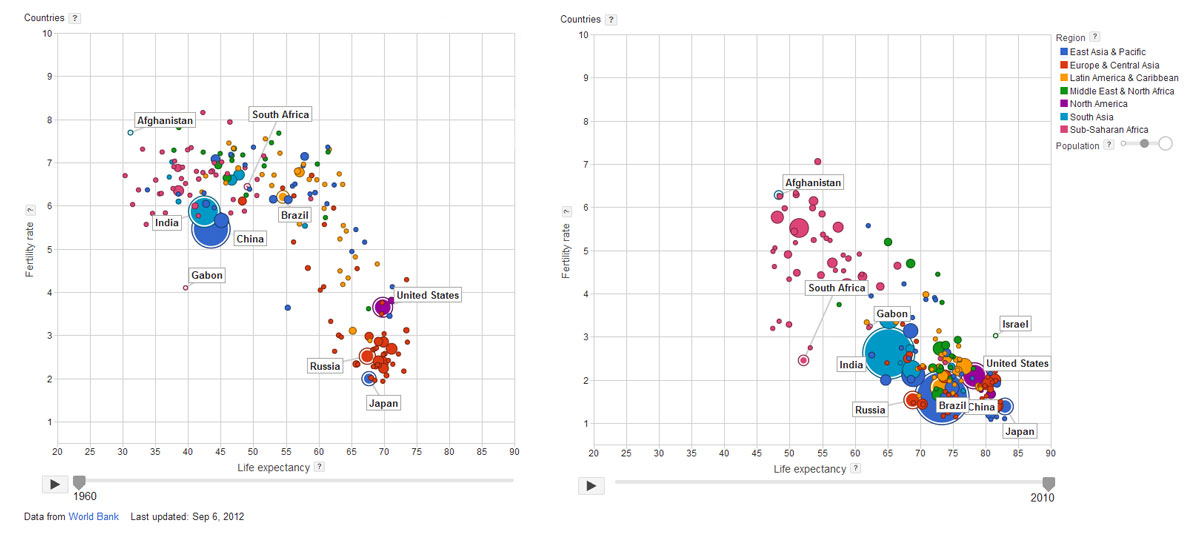This map created as part of the WomenStats Project, is aimed at determining the relationship of security and behavior of states and the security of women living in those states. It has built a global database of the status of women worldwide, with data from 174 countries.
As seen in the map for the year 2009, countries where women experience lack of physical security include India, Pakistan, Afghanistan, Indonesia and other Muslim countries in Asia and Africa. In the Americas, Peru seems to be the place were women lack physical security the most. The darkest color in the map indicates the highest degree of lack of physical security for women.
For more information visit: WomanStats Database





